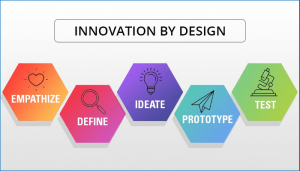I was a very young girl of five or six when I heard about my great grandfather, an Ayurvedic physician, who had saved the lives of many, including my own father, using treatments he pioneered. I was particularly fascinated by the story of a drug he formulated to cure filariasis or elephantiasis. Transmitted by the bite of a mosquito, this disease, which had no cure until recently, causes highly swollen extremities. The resulting morbidity and social stigma exact a huge toll on patients, physical, mental and emotional. Not surprisingly, people came from far and wide to be treated by Great grandfather. It is another story altogether that the composition of the preparation, written down on palm leaf manuscripts, was lost to termites in the 1970s! Nevertheless, I was moved and inspired by stories of his quest for new medicines. Many years later, when I started my own drug discovery and development company, those stories became my beacon, giving me the courage to quit my corporate life.
While inspiration and passion are prerequisites for entrepreneurs, the business of innovation itself requires a sound strategy to deliver products within budget and timelines. At the heart of this strategy is the choice of product that an entrepreneur sets out to build. Entrepreneurs are often driven by gut feeling or an instinctive feeling about what the market wants. However, gut feeling can be wrong or biased by the entrepreneur’s specific experiences. In an attempt to systematize the process, Stanford University’s Design School came up with a human centric model for innovation called “Design thinking”.

Design Thinking consists of five steps: Empathise, Define (the problem), Ideate, Prototype, and Test. The first step, empathize, asks that the innovator observe the world and engage with people whose problems she/he wants to solve. This allows the innovator to dispel his/her own assumptions and gain insights into the user’s world. These experiences then help define the problem, which is the second step in the process. To illustrate, let’s consider the case of a patient suffering from pain in the spine. The patient may not know whether to consult a neurologist or an orthopedic. Making the wrong choice means that the patient’s treatment takes longer and costs more. Empathizing with the patient, an entrepreneur may define the problem as an inability to identify the appropriate specialization. But on closer study, the entrepreneur will notice that beyond specialization, the patient needs help finding a particular doctor, while optimizing for cost and distance. Thus, an immersion in the patient’s reality, will enable the entrepreneur to define the problem in all its dimensions.
The next stage in the design thinking framework is to ideate. The entrepreneur now starts to brainstorm and come up with solutions. There may be multiple ideas and multiple ways to solve a problem. Which is the right way? Once again, the entrepreneur is encouraged to put himself/herself in the shoes of the customer or the end user to select the solution that best addresses the need. Take the example of malaria control. If one wants to reduce the transmission of malaria, what is the right product strategy? Prophylactic use of malaria drugs during the rainy season, bed nets, mosquito repellant creams, spraying neighborhoods, R&D for new drugs? Clearly the choice depends on the skillset of the entrepreneur, the timeline for creating new products and the budget allocation. There is one other critical factor. Which solution is a customer likely to pay for? In this example, it is unlikely that a customer is willing to pay for spraying a neighborhood but is highly likely to pay for an ointment that keeps mosquitoes away. Market size and projected revenues also inform the choice. Thus, an entrepreneur zeroes in on the solution based on a balance of need and commerce.
The next two stages are linked and involve prototyping the solution and testing it. The entrepreneur experiments with materials, format, setting and design, based on the type of solution. Each version of the solution is tested and the results fed into the next prototype. This iterative process continues until the entrepreneur is convinced that the solution is optimized. Prototyping and testing can be expensive and time consuming; so being aware of the “requirements” of the solution is of paramount importance. For example, with medical devices that are invasive or indwelling, the materials must be inert and specifications may be tightly defined by the Regulatory body of the country. Clinical trials or clinical validation studies may also apply.
Design thinking is not just for entrepreneurs. The principles are broad and can be applied to many situations in the work place. Companies that are driven by innovation can apply this methodology to bring new products or services into their portfolio. Once internalized, design thinking becomes a powerful way to approach any complex situation and devise a solution.
If you would like to learn more about applications of design thinking to product development, please register for our Idea Validation Bootcamp, Sept 21-22, 2019. This one has a specific focus on healthcare.
https://startupbyte.com/events/idea-validation-bootcamp-with-health-care-focus



Next post